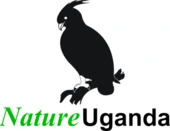Persecution and illegal trade threatening Uganda’s national symbol

In a devastating incident that has sent shockwaves through the conservation community and general public, 11 Crested Cranes died due to poisoning in rice fields in Lwengo district. These magnificent creatures, also known as the Grey Crowned Crane, hold a special place in Uganda as the country’s symbolic bird, adorning the national flag and coat of arms. The incident serves as a reminder of the challenges faced by these species and highlights the urgent need for conservation efforts.
Sadly, the Crested Crane population is rapidly declining, leading to its classification as an endangered species by IUCN. Factors such as habitat loss, illegal wildlife trade, and human-wildlife conflicts have greatly contributed to their vulnerability.
In addition to the poisoning incident, reports have surfaced regarding capturing and exporting of these majestic birds in other parts of Uganda including Kabale, Rubanda, Kanungu and Kisoro districts. These activities further exacerbate the challenges faced by the Crested Crane population.
For the last decade, NatureUganda (NU), in collaboration with national and international partners, has led conservation efforts for the species through activities that focus on the species and habitat (wetlands). NatureUganda has already developed a national species Action Plan that provides strategies for the conservation of the bird. In addition, NU has proposed Lake Bunyonyi and Kiyanja wetlands for designation as RAMSAR sites. The primary goal has been to curb the decline of Grey Crowned Cranes in the species strongholds in Uganda, by maintaining and improving the ecological integrity of wetlands, developing effective methods of protecting breeding pairs, chicks and flocks, and improving the livelihoods of local communities. Other steps taken to safeguard these birds and their habitats include community engagement programs, education initiatives, and the establishment of Crane custodian programmes (where local communities become local custodians of the Cranes).
We call upon responsible agencies to ensure the effective enforcement of wildlife protection laws, dismantle illegal trade networks and implement stricter regulation of pesticide use. We need to continue raising awareness among local communities to contribute to the long-term survival of the birds.
‘Uganda understands better than the other countries the importance of biodiversity, not only because of ecosystem services, but also as the main source of the 1.5b from tourism, the highest foreign exchange earner for the country today’, noted Achilles Byaruhanga, ED-NU.
As custodians of this natural treasure, it is our collective responsibility to ensure their survival for future generations. Together, we can create a future where the crested crane soars freely, symbolizing the pride and beauty of Uganda.
Read more about the Crane Conservation Programme
Related Posts
Recent Posts
Forests and wetlands degradation and it’s impacts on herpetofauna and other wildlife
Embracing Regenerative Tourism as the next step in Sustainable Tourism
Engaging Site-based Communities in Research and Conservation: The Locally-based Monitoring Initiative
All Categories
- Conservation and Development (27)
- Eco-tourism (3)
- Education and Awareness (10)
- Forests (7)
- Habitats (9)
- Nature walk (2)
- People (5)
- Projects (9)
- Public dialogue (6)
- Research and Monitoring (18)
- Sites (4)
- Species (10)
- Wetlands (12)
- Wildlife (6)




